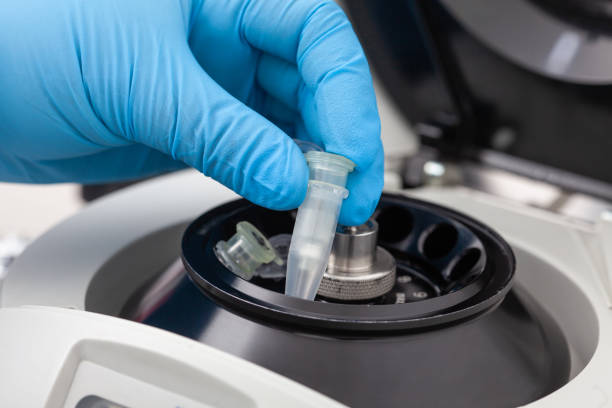
Solid-phase extraction is a method to analyze chemical compounds. Alongside the ability to extract compounds in a single step this method is very cost-effective. This process is especially useful in reducing the volume of samples while maintaining high analytical performance. Based on the goal you want to achieve, a solid-phase extraction process will yield results using a wide range of analytes.
Automated processes
Solid phase extraction can be automated, which is an alternative to manual procedures. They are less labor-intensive, more efficient, and come with a simplified system.
Automated processes for SPE has evolved through the time. There are a variety of equipment that are available, including reversed phase, mixed mode, and ion exchange. Common applications are environmental trace enrichment of organic pollutant, as well as clinical applications of drugs within the physiologic matrixes.
Solid Phase Extraction utilized in SPE are molecular imprinted polymersas well as immunoaffinity sorbents, and restricted access materials. The techniques are semi-automated or manual.
A dual-arm robotics system that uses positive pressure is a great option to automate sample preparation. OneLab(tm), software manages the robot's performance and ensures precision. The workstation also works with mass spectrometry as well as liquid chromatography.
Analyte selectivity
The sorbents employed and the interaction between them and the analyte and sorbents will determine the selectivity of the analytes used in solid-phase extraction. These interactions are crucial for ensuring the separation of molecules.
Sorpents are often chosen due to their capacity to bind contaminants and to elute analytes. The materials can be altered to ensure the highest level of selectivity.
Nonpolar sorbents are the most efficient in aqueous samples. polar sorbents are best suited for nonpolar solutions. Analytes can be dispersed away from the surfaces of sorbents through polar solvents.
The analyte is displaced from its sorbent during the elution phase and collected in the form of a solution. The solvent used for elution must be strong enough to completely dissolve the analyte.
An important factor in SPE is the linear velocity. The flow rate and column are both important factors in SPE. One milliliter per minute is the standard flow rate.
Non-polar Ionic, Polar, and Non-polar Targets
Solid-phase extraction is one method that is used to separate organic compounds which are dissolving in liquid media. The method is founded on the combination of liquid chromatography columns and an sorbent that is solid. This technique has many benefits. It's easy to operate it is flexible, has a wide range of options and offers higher rate of recovery. However, it's not suitable for extreme Polar targets.
Solid-phase extraction is based by utilizing the idea that analyte is absorbed by the polar surface of a sorbent. After the sorbent material is removed, any remaining impurities will escape through the liquid sample. Based on the sorption characteristics of the material, a water-soluble reagent is able to be added to eliminate the impurities.
Two main types of targets are employed to extract liquids in solid phase such as ionic and an ionic. The ionic force of targets with ionic forces is usually much lower than that of the polar force.
Chemical composition of the surface of the sorbent
Solid-phase extraction (SPE) is a method for preparing samples by combining the action with a non-polar absorbent as well as analytes. It can be utilized in many ways. The extraction process is the analyte is removed from the surface of the sorbent by the process of the process of elution. The extraction process operates in the same way as column chromatography.
SPE includes five stages. The five steps comprise pretreatment, activation washing, activation and pretreatment. Each step should be optimized to increase the efficiency of the entire procedure. There are two main reasons that cause low recovery spe.
Analyte breakthrough is a reason. Analyte breakthrough may occur during loading, conditioning and the elution process. For instance hydrophobic phases can be eluted with acetonitrile or methanol. A sorbent that contains an ion exchange component may require a mixture of nonpolar solvents as well as buffers.
Oasis(r) MAX sorbent
Oasis(r) MAX SPE cartridges are available from Waters Corporation in Milford, MA. They are an effective, hydrophilic-lipophilic sorbent for solid-phase extraction.
With this device, we have developed a simple method for screening the presence of drugs of abuse in skin and hair samples. This method uses a simple extraction procedure which takes less than 30 minutes. Moreover, this technique is able to be used on sewage waters to determine the presence of artificial sweeteners, polyether ionophores and polyether ionophores in water.
To determine the efficacy and reproducibility of the process of optimization, a series spiking experiments were carried out in Taihu Lake. At each stage of the process, the duration, temperature, pH and salinity, as well as the elution solvent and concentration of the analyte were examined to assess their effects on the ability to recover, sensitivity and reproducibility of the test.
